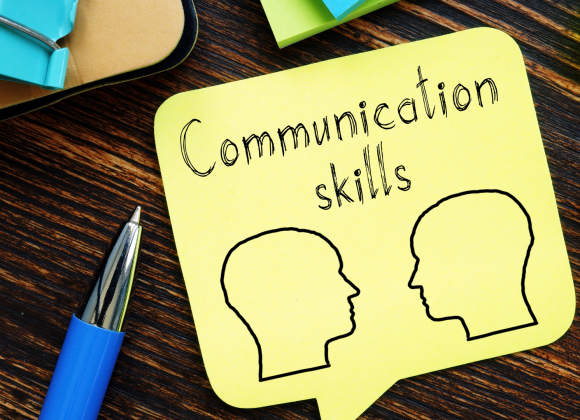Public speaking is one of the most powerful tools you can master—not just for career advancement, but for personal growth and leadership. Whether you’re addressing a boardroom, presenting at a conference, or delivering a toast at a wedding, effective communication can inspire, influence, and inform. Yet, many people fear public speaking more than death.
The good news? Public speaking is a skill anyone can develop with practice, patience, and the right strategies. In this guide, we’ll explore 10 expert-backed tips that can help you become a more confident and impactful speaker.
1. Know Your Audience: Speak Their Language
Before crafting your message, take the time to research your audience. Who are they? What are their interests, pain points, and expectations? Speaking to a group of college students is very different from addressing senior executives.
Pro Tips:
- Demographics & Psychographics: Know their age, profession, cultural background, and mindset.
- Tailored Language: Use technical terms or analogies your audience will understand and appreciate.
- Relevance: Address topics that matter to them, not just to you.
2. Open with Impact: Grab Attention Immediately
Your opening sets the tone for your entire speech. A strong start grabs attention, sparks curiosity, and signals confidence.
Techniques That Work:
- A thought-provoking question (“Have you ever been terrified of public speaking?”)
- A surprising statistic (“Did you know 77% of people have anxiety about public speaking?” – GlobeNewswire, 2023)
- A short, relatable story or personal anecdote
According to TED speaker coach Chris Anderson, “If you don’t engage your audience in the first minute, you may lose them forever.”
3. Structure Like a Story: Organize with Purpose
Great speakers don’t ramble—they take you on a journey. Structuring your talk clearly helps your audience follow along and retain more information.
Classic Structure:
- Introduction: Set the scene and state your purpose.
- Body: Break content into 2–4 key ideas. Use examples and evidence.
- Conclusion: Reinforce your message and provide a call to action or takeaway.
Cognitive psychology shows that people remember stories better than facts. Narratives engage both the logical and emotional brain.
4. Practice Authentically: Rehearse Without Memorizing
Practice is crucial, but there’s a difference between preparation and perfectionism. Over-rehearsing can make you sound stiff. Instead, focus on internalizing your main ideas and practicing delivery.
How to Practice:
- Record yourself and review your body language and tone.
- Rehearse in front of friends or colleagues.
- Practice transitions between points and handling Q&A.
TEDx coach Gina Barnett recommends practicing under different conditions (standing, walking, with distractions) to simulate real-life variables.
5. Use Confident Body Language: Speak Without Words
Your body speaks before you do. According to body language expert Amy Cuddy, confident posture not only influences how others perceive you—it also affects how you feel about yourself.
Key Elements:
- Posture: Stand tall with shoulders back.
- Eye Contact: Engage various parts of the audience.
- Gestures: Use open gestures to reinforce points.
- Movement: Move with purpose to energize your message.
6. Harness the Power of Pause: Let Silence Work for You
A pause can be more powerful than words. It gives your audience time to absorb your message and adds dramatic effect.
Use Pauses:
- After an important point or quote
- Before a big idea or reveal
- When transitioning between sections
Silence builds suspense, signals confidence, and gives you a moment to collect your thoughts. Mastering the pause is a sign of seasoned speaking.
7. Eliminate Fillers: Speak with Precision
Filler words like “um,” “like,” “you know,” and “so” dilute your message and make you sound less confident. The first step to eliminating them is awareness.
How to Fix It:
- Record yourself and identify common fillers.
- Practice pausing instead of filling space.
- Slow down your speech to reduce the urge for fillers.
Insight from Toastmasters International: Conscious pausing and breathing naturally help reduce filler words.
8. Engage Your Audience: Make it a Dialogue
Even in a keynote speech, audience engagement can transform passive listeners into active participants. Interactive elements break monotony and increase retention.
Tactics:
- Ask rhetorical or real-time questions.
- Use quick polls or ask for a show of hands.
- Include humor or relatable references.
Tip: Involve your audience in your content. “Have you ever experienced this?” makes them reflect and connect.
9. Support Your Message Visually (But Don’t Rely on Slides)
Visuals can elevate your message, but cluttered slides or irrelevant graphics can be distracting.
Slide Guidelines:
- One main idea per slide
- Use visuals (charts, photos, icons) over text
- Keep fonts large and readable
According to a study, presentations with visuals are 43% more persuasive than those without.
10. Seek Feedback and Reflect for Continuous Growth
Great public speakers treat every presentation as a learning opportunity. Constructive feedback from mentors, peers, or even your audience helps you grow faster.
Self-Improvement Tips:
- Record your sessions and analyze them.
- Ask trusted colleagues for honest feedback.
- Reflect on what worked and what didn’t.
Join groups like Toastmasters or take online public speaking courses to continuously refine your skills.
Conclusion: Speak with Purpose, Confidence, and Passion
Public speaking is not just about saying the right words—it’s about making a connection. When you combine clarity, authenticity, and practice, your voice becomes a powerful tool to inform, inspire, and lead.
Start small, stay consistent, and remember: Every great speaker was once a nervous beginner. The stage is yours—own it.





